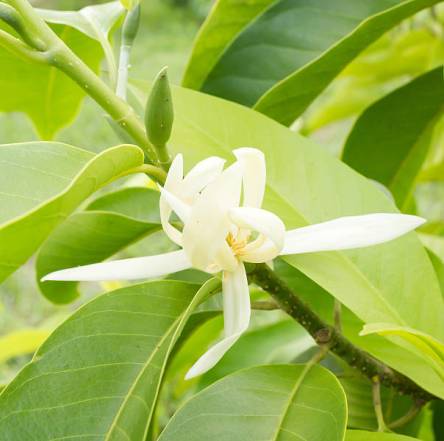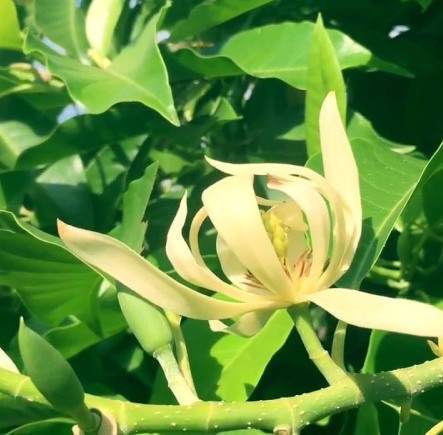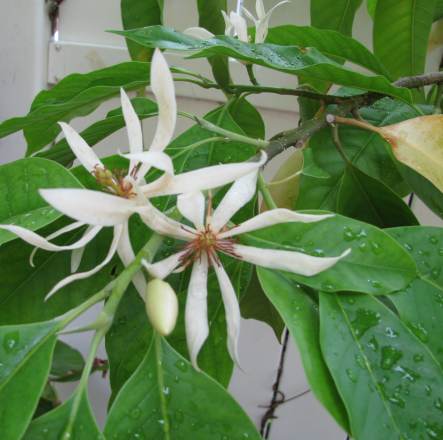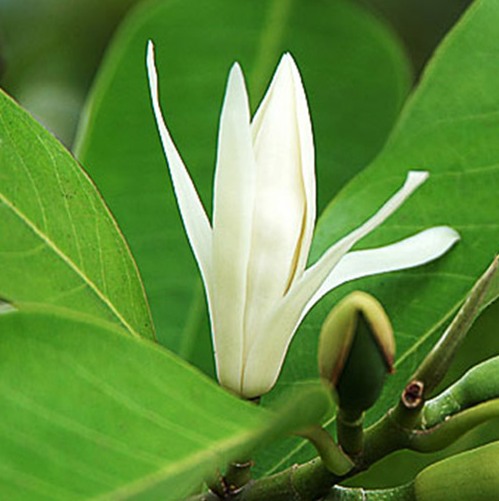



Botanical name Michelia champaca L.
Synonyms Golden champa, champak
Family Magnoliaceae
Source Flowers
Origin India
Processing Method Steam Distillation
Color/Consistency Reddish Brown transparent liquid & unique and appealing fragrance
Aromatic Summary / Note / Strength of Aroma Rich, velvety, suave, vanilla-sweet floral with warm, dense, peach/apricot-like notes and spicy tea- and hay-like undertones; the rich, sweet floral and tea/hay notes remain in the long drydown.
Blends With Agarwood, Black Pepper, Carnation, Cedarwood (Atlas), Cardmom, Clove Bud, Coriander, Galbanum, Jasmine, Lime, Mandarin, Neroli, Orange, Orange Blossom, Orris, Rose, Sandalwood, Vanilla, Violet Leaf, Ylang-Ylang.
Product Abstract
Michelia champaca is native to the Philippines and the Indonesian islands, but now also grows in places far west of its origin - India, southeast China, Réunion, and Madagascar; the flowers are a beautiful deep orange-yellow borne on a medium-sized slender tree related to the Magnolias.4 In many areas where it thrives, the flowers are used for ornamental purposes and for worship in temples.
History
In Theravada Buddhism, champaca is said to have used as the tree for achieved enlightenment, or Bodhi by seventeenth Lord Buddha called "Aththadassi. According to Tibetan beliefs, the Buddha of the next era will find enlightenment under the white flower canopy of the champaca tree.
Harvesting/Extraction Information
The tree thrives best in damp climate and requires deep moist soil. It is moderate light demanderand is sensitive to frost. Natural regenration is usually plentiful around the mother trees. The tree flowers in hot and rainy weather and seeds late in august.
Michelia alba essential oil obtained from leaves through the process of Steam Distillation. it is scientifically known as Michelia alba. the plant of alba can grow in to the large tree with the smart flowers. it is related to Magnoliaceae family. it is orgin of China. It has pale yellow to orange yellow liquid in color.
Common Usage
Caution
Dilute before use; for external use only. May cause skin irritation in some individuals; a skin test is recommended prior to use. Contact with eyes should be avoided.
Key constituents
Linalool 76.3%
2-Phenylethanol 6.4%
9,12-Octadecadienal 2.3%
Methyleugenol 2.3%
Methyl hexanoate 1.0%
Safety summary
Hazards Potentially carcinogenic, based on methyleugenol content
Contraindications None known
Maximum dermal use level
EU 0.01%
IFRA 0.02%
Tisserand & Young 0.9%
Our safety advice
We recommend a dermal maximum of 0.9%, based on 2.3%
methyleugenol with a dermal limit of 0.02%
Regulatory guidelines
According to IFRA, essential oils rich in linalool should only be used when the level of peroxides is kept to the lowest practical value. The addition of antioxidants such as 0.1% BHT or atocopherol at the time of production is recommended. IFRA recommends a maximum concentration of 0.0004% methyleugenol in leave-on products such as body lotions. The equivalent SCCNFP maximum is 0.0002%.
Organ-specific effects Adverse skin reactions No information found. Oxidation products of linalool may be skin sensitizing.
Systemic effects
Acute toxicity No information found.! Carcinogenic potential. No information found for white champaca
absolute. Methyleugenol is a rodent carcinogen when oral exposure is sufficiently high.
Comments
Limited availability. Magnolia leaf and flower oils are distilled from the same plant.